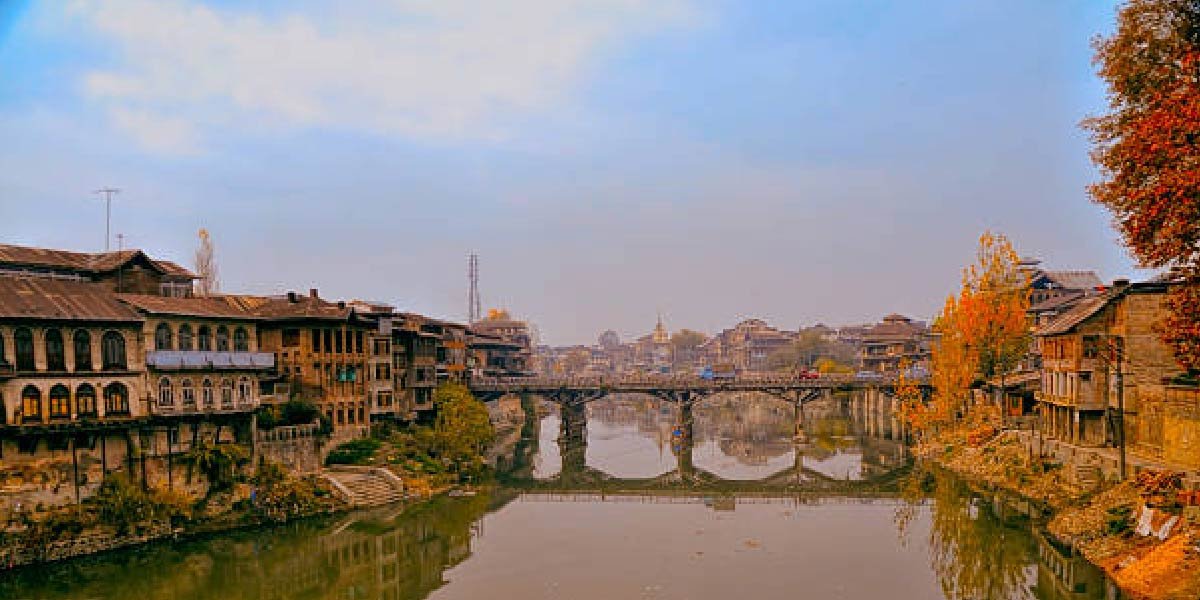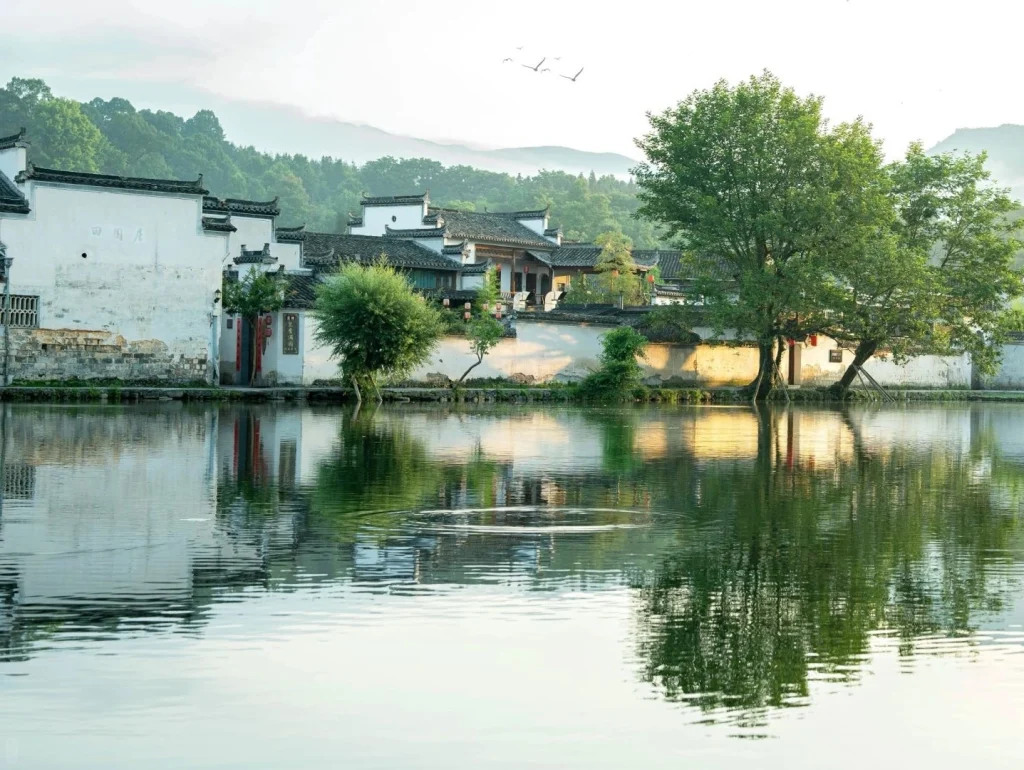While a number of travelers think of cities like Beijing or Shanghai alongside natural wonders such as Zhangjiajie, the list of captivating places China has to offer is much longer. There are places that require a little more attention and have deep natural and cultural beauty—like Anheihe. In this article, we will explore everything Anheihe has to offer, its importance, and everything travelers need to know before planning a visit.
What is Anheihe?
Anheihe is a sinuous river valley famous for its intricate beauty and culture. It has a considerable amount of attention from historians, ecotourists, and people who are fond of nature. Anheihe, translated poetically, means “Dark and Peaceful river” a title that depicts the calm and shadowed lush forests around the river.
Although some of the administrative aspects of Anheihe could change according to the area of reference, the majority of people would connect the term with ecological reserves, river systems, and the protected natural places in the southern and central regions of China. The region’s unspoiled natural surroundings protect a lot of different ecological systems and make it a perfect spot for eco-tourism.
The Stunning Splendor of Anheihe

The rediscover the area’s enchanting attractiveness, one of the best places is Anheihe. The region of this area captures the imagination with:
Flourishing Valleys and Forests: Anheihe is famous for its dense forests, which not only have some of the native important fauna, also unique species of flora and some species of evergreen trees. The forests are also home to a diverse range of fauna and therefore an area which is widely preserved acts as a shield for the diverse wildlife.
Waterfalls and Rivers of Splendid Clarity: The Anheihe river is among the important contributors of the area and it not only provides the people with water but also a source of stunning beauty. It features regions of tranquil water as well as certain parts where it cascades down the cliffs.
Mountains of vivid features and pathways: In addition to the mesmerizing water bodies, Anheihe is also famous for its stunning and elegant double pendant water bodies which are along the river. Anheihe can have amazing places for water bodies which not only are visually beautiful but also weather is favorable.
Rich Biodiversity: This specific area protects critical ecosystems, including their unique species such as endangered birds, amphibians, and mammals. In Anheihe, conservation efforts are directed toward maintaining this ecosystem for the benefit of the ecosystem-sensitive future generations.
Cultural and Historical Signficance of Anheihe
In addition to being charming, Anheihe is extraordinarily beautiful. This region is a home to a variety of peoples who have managed the lands for centuries and, in the process, have developed a rich culture.
Ethnic Heritage: There are different meanings related to Anheihe where some are connected to the areas settled by minority groups like Miao, Dong, and Tujia. Such people enrich the region with unique music, dance, festivals and textiles.
Historical Sites: Anheihe is also associated with the ancient temples, stone paths and ruins of ancient settlements such places tell us the culture and civilization of the people. These places are also believed to have been populated hundreds of years ago, reflecting Chinese rural civilization.
Spiritual Significance: Anheihe’s calm waters and quiet woods are believed to have a deep calm and restorative nature. The locals usually name such places as branches of reality, where souls and their nature blend.
Why Travel to Anheihe?
For considerately minded travelers Anheihe is a relatively new destination because of its growing interest in eco and off-the-beaten-path travel. Here’s why:
- Less Commercialized: Anheihe is one of the least known locations in China and, as a result, offers a much lower price point in addition to being less crowded and more affordable compared to China’s tourism hotspots.
- Eco-Friendly Lodging: The region sponsors eco tourism with eco-lodges, organized nature hikes, and conservation-centered educational outreach activities.
- Anheihe Photography and Cultural Art: Anheihe’s culturally rich and dramatically beautiful landscapes provide the endless inspiration photographers, painters, and writers seek.
- Health and Wellness Retreat: Mindfulness activities, meditation, and retreats from technology may be done in Anheihe as its environment is peaceful, offers fresh air, and promotes a slow and relaxed lifestyle.
- Aid Anheihe’s local Communities: Visiting Anheihe streams tourism revenues to local families and artisans aiding them in their traditional lifestyles.
Travel Tips to Anheihe

Traveling to major cities first and then using local transport to move into the region is the best path to accessing Anheihe. Depending on the exact location, as the name may refer to multiple areas, the following options are the most common:
By Air: A common route would be flying to a regional airport like Guiyang, Changsha, or Chongqing and from there taking a bus or getting a car to Anheihe.
- By Train: Many Chinese cities are linked via high-speed train to the provincial capitals close to Anheihe. From there, local buses and taxis provide access to the location.
- By Road: The journey to Anheihe is enhanced by picturesque drives through rural villages and rugged mountain passes.
It is advisable to pay attention to local travel warnings. Regulations along the routes may change during the rainy season, leading to mountains routes becoming slippery.
Best Time to Visit Anheihe
Spring and fall are the most recommended visiting season for Anheihe, so the best months would be March to May and September to November. During this time:
- Weather conditions remain mild and pleasant.
- Spring brings blooming flowers and vibrant foliage during autumn.
- Rainfall is moderate, decreasing the likelihood of landslides or trail closures.
- During summer, expect the weather to be humid and rainy while winters may bring snow and cold temperatures along the higher elevations. These seasons are great for those looking for a quiet retreat.
Travel Tips for Anheihe
To keep the beauty and integrity of Anheihe, consider these tips:
- Travel Light and Green: Reusable water bottles, bags, and containers are great options to reduce waste.
- Respect Wildlife: Animals should be seen from a distance and should not be fed.
- Stay on Marked Trails: To help control soil erosion and protect plant life, keep to the marked routes.
- Support Local Businesses: Do not forget to buy souvenirs, meals, and tours from local vendors.
- Leave No Trace: Do not disturb natural features by picking plants and ensure all trash is collected and disposed of properly.
Anheihe in the context of Chinese ecotourism
With the increase in sustainable focus on China’s environment, areas like Anheihe are gaining attention and recognition for their ecological significance. Both governmental and non-governmental organizations are working towards the sustainable development of the area by balancing tourism and environment. This includes:
- Providing eco-friendly accommodation facilities.
- Educating locals on environmental sustainability and training them as tour guides.
- Establishing environmental waste management systems.
- Promoting Anheihe as a model for Responsible Tourism.
These efforts are aimed towards the goal of making sure that Anheihe remains a clean ecotourism hotspot for years to come.
FAQ’s
Q1: Where is Anheihe?
A: Anheihe is a natural region in China, often associated with river systems and forests in Guizhou, Hunan or Sichuan. While the river systems and forests have a much broader region of central to southwestern China, the exact administrative boundaries are often debated.
Q2: Safety measures for tourists visiting Anheihe?
A: Anheihe is safe for visitors. The locals are friendly, and the safety of tourists is considered with the development of the area’s tourism infrastructure. As with any area, general precautions such as itinerary planning and monitoring the weather are recommended.
Q3: Availability of accommodation options in Anheihe?
A: The area has eco-lodges, guesthouses, and family-run homestays which provide comfort, stunning views, and traditional hospitality. Though lacking in traditional luxury hotels, Anheihe does not have a shortage of family-friendly accommodation options.
Q4: Availability of accommodation options in Anheihe?
A: While Anheihe can be visited any time of the year, the most favorable conditions and unrivaled scenery are offered during spring and autumn. Winter can be visited as well, but the weather necessitates some preparation.
Q5: Anheihe as a family travel destination?
A: Anheihe is family friendly, offering nature trails, culture, to educational tours. The region boasts many trails to chose from, and guides often organize tours for families.
Q6: Recommended items to bring on a trip to Anheihe?
A: Along with hiking shoes and weather considerate clothing, travelers shouldn’t forget a camera, eco-friendly toiletries, and a journal to fully accommodate all the thoughts that will arise in this tranquil environment.
Q7: Is Anheihe accessible for travelers with disabilities?
A: While some visitor centers and eco-lodges are making attempts to improve their facilities, accessibility is still limited due to natural terrain. It is best to discuss specific needs with the accommodation provider prior to arrival.
Q8: Can I engage in outdoor activities in Anheihe?
A: Absolutely, visitors can partake in hiking, birdwatching, kayaking on rivers in designated areas, photographic endeavors, and cultural activities which include traditional craft and tea ceremonies.
Q9: Is there mobile network coverage in Anheihe?
A: Remote areas may have limited coverage. It is advisable to download maps and inform family of the travel itinerary. It is best to take the opportunity to disconnect and immerse in nature.
Q10: How can I contribute to conservation efforts in Anheihe?
A: Support for conservation can be made by choosing eco-certified tours, donating to local environmental initiatives, participating in clean-up campaigns, and promoting responsible travel.
Final Thoughts
More than a location, Anheihe is an experience. It is a region where nature and history speaks, and culture flourishes. Anheihe is exceptional for an adventurer, culture seeker, or a traveler in search of tranquility; the region wonderfully combines peace and exploration.
Shifting towards more sustainable and authentic tourism practices is enabling regions like Anheihe to receive attention—not for geopolitical dominance, but preservation purposes. Responsible visiting allows one to seamlessly integrate into the movement aimed at conserving the incredibly valuable nature and society resources.
If you are interested in a trip that balances the needs of the spirit, humanity, and the planet, Anheihe is the spot for you. Allow the calm and dark stream to lead you on a journey to reconnect with yourself and nature on a deeper, purposeful level.